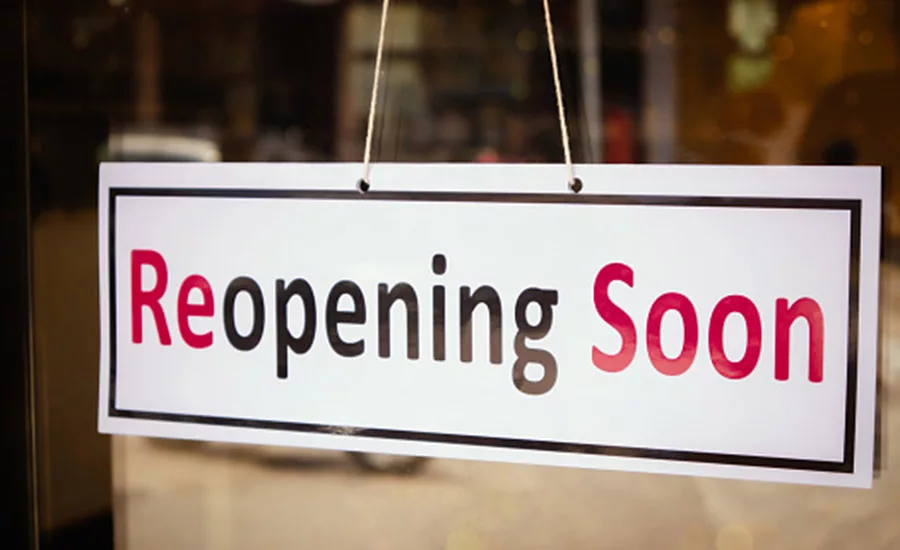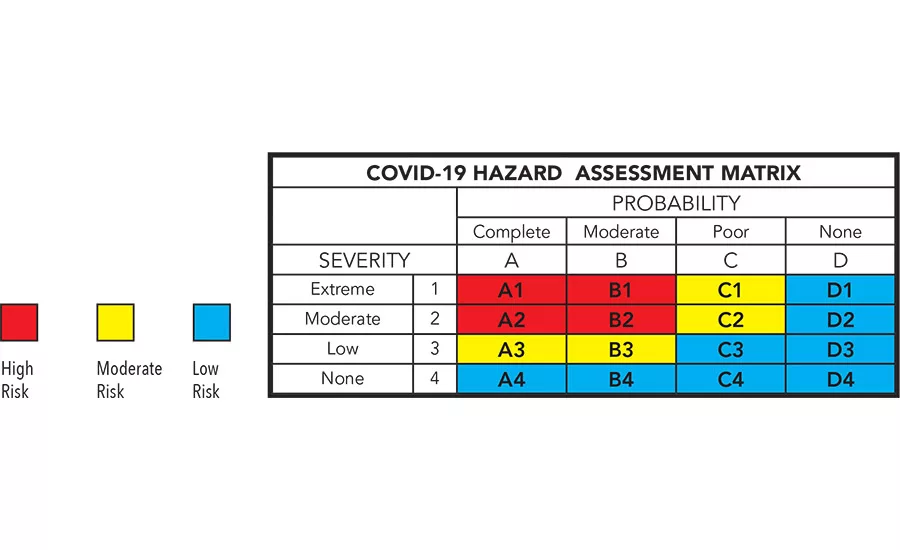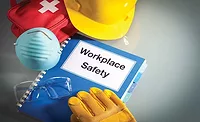Restart Safety Plan for Roofing Contractors



Since the enactment of the National Emergency Act in 1976, eight different presidents have held office and collectively declared 61 national emergencies when the health and safety of United States citizens was threatened by natural or man-made events. Of them, 27 expired, and 34 currently remain in effect, including President Trump’s emergency declaration over the COVID-19 pandemic in April. The declaration stipulated states’ rights to set up their own emergency action plans and establish categories of “essential” and “non-essential” industries.
In New York the construction and manufacturing industries reopened in May when statewide Covid-19 related hospitalizations declined. Those industries reopened by demonstrating the ability to plan safe work practices while complying with applicable CDC guidelines, including testing. In the fog of this nano-scale war, confusion continues around national testing as fears of a second wave of infection grow.
The fact remains, sooner or later, depending on your particular state and local policies, you may find yourself back at work on a construction site wondering, “What happens next?” No one has ever done this before, so if I told you that as a safety and health consultant I know exactly what to do, how to do it, and when to start, I’d be just another liar in a long, long line. But I do have some reasonable recommendations. I believe each contractor should forestall calling workers back to the job until they’ve evaluated each and every personal consequence of their actions, including developing their own practical start-up plan.
Start-Up Plan
Since 1970, the General Duty Clause remains the core safety mandate applicable to every employer across the U.S. It states that all employers shall provide every employee with a type of work and place of work that are “free from recognized hazards that are causing or are likely to cause death or serious physical harm to his employees.” No one doubts that COVID-19 represents such a “recognized hazard.” Just as employers have the liability to protect their workers during hurricanes, tornadoes, earthquakes, floods and blizzards while at work, so shall they protect them from on-the-job exposures to deadly infectious diseases and illnesses.
If an employer undergoing an on-site OSHA inspection is observed to willfully neglect the CDC Pandemic guidelines and safe-work practices, OSHA may precipitately cite the employer for a violation if that employer failed to conduct work in a “good-faith effort” to protect their employees. But with all 50 states reopening at different times, the compliance with the General Duty Clause may, sooner or later, become more of an applicable regulatory issue, particularly for contractors without a reopening plan.
A start-up plan should include means and methods for suspending all work immediately and recommencing social isolation if jobsite monitoring shows their efforts are unsuccessful at protecting their workers from the disease. Without the ability to confidently provide baseline diagnostic and periodic antigen (blood sample) testing of the workforce, I’m not sure that any employer could reasonably defend a claim of “good-faith effort” before an administrative law judge.
The pandemic will be never be “behind us” until a proven vaccine exists. Every employer realizes that re-opening their business during the pre-vaccine phase not only presents legal hurdles, but some ethical consequences considering the health and safety of employees and customers alike.
Despite all reasonable precautions taken as we return to work, we could eventually find ourselves in a second, or even third, wave of infections, through our own action or inaction. As several states with relatively low infection rates reopen, there are a number of infectious disease experts who plot our present location in the foothills, rather than the summit of this disease progression. Placing employees on a cross-contaminated jobsite one hour more than necessary during a resurgence of the virus could invite a much larger health threat with growing legal consequences.
Developing a RAM
A Covid-19 Risk Analysis Matrix (RAM) would depict the probability (A-D) of viral infection on one axis versus the potential severity (1-4) of contracting the virus on the other. Every economic decision made by a contractor should be given a health risk assessment at a minimum.
Most reasonable persons would determine that returning a workforce to a public or private jobsite prior to the availability of an FDA-approved vaccine would likely result in a high risk exposure (A1 to B2), potentially with lethal consequences. As anyone who has received a flu shot will attest, it’s a best-guess formula with mixed results for each individual recipient.
Even if yours is not a family-run business, in today’s high-risk, global work environment we should now realize we’re all family. A well-considered, written health and safety plan meant to inform employees what’s expected while at work must be site-specific, task-specific and worker-specific, especially where viruses must be assumed to be present. As most plans must remain flexible as site conditions change and employee feedback dictates, this process must remain dynamic rather than static.
More than half of the contractors in my personal survey admitted to occasional rounds of panic when they thought about precisely how to return to work under evolving environmental conditions. As one contractor explained, it feels like asking his crews to work in ankle-deep water on high voltage circuits without shutting off, isolating and locking out the main power.
HazWOPER Lessons
During the initial 40-hour training for hazardous waste operations and emergency response, I focus on the four major components of the standard in order to protect ourselves in a relatively high-risk environment where everything and anything on-site can change without warning. I created a simple flowchart graphic to illustrate the HazWOPER standard. The invisibility (below 50 microns in diameter) of many toxic waste particles, gases and vapors, is analogous to COVID-19. The variation of virility timelines on a myriad of surfaces and the CDC-approved cleaning agents and decontamination protocols also play a large part in restart planning.
Two components (exposure monitoring and medical surveillance) are offensive tactics, requiring the employer-designated Competent Person’s (CP) actions in order to implement worker protection from all of the perceived and suspected hazards on site. The other two are defensive tactics requiring the CP’s reactions in order to implement worker protection. In my experience, the problem with reacting only is that it entails two deadly sins: 1) Omission (not doing what should be done); and 2) Commission (doing what shouldn’t be done). In order to prevent both, at the center of all four components should be the employer’s designated CP.
The CP shall be extensively trained and experienced in the work to be performed, as well as all pertinent OSHA safety and CDC health standards applicable to the infection risks involved. They are responsible to “steer, accelerate and brake” the project when and where necessary. The CP shall be allocated 100% of the employer’s authority and responsibility to identify all existing and potential infection hazards on every shift. Operating under less than 100% authority is a guaranteed formula for failure.
The CP shall also be authorized to take prompt corrective action to mitigate, abate or totally avoid those identified hazards. In other words, “prompt action” means that the CP is not required to obtain any additional authority or permission prior to “spending the boss’s money” to maintain workplace safety and health.
Please note in this diagram, encompassing the entire project, is a well-considered, thoroughly implemented, written health and safety plan. Workers won’t know what’s expected of them without specific instructions that are thoroughly distributed and clearly explained. Likewise, a pandemic construction start-up plan must be site-specific, task-specific and worker-specific, especially where pathogenic viruses must be assumed to be present. Consider the uncertain nature of any construction site operating without a re-opening plan while simultaneously working during the pre-vaccine phase of the pandemic. We were all raised knowing the humorous consequences of “assuming,” but assuming that this crisis is over and behind us could have many more lethal consequences.
Looking for a reprint of this article?
From high-res PDFs to custom plaques, order your copy today!







